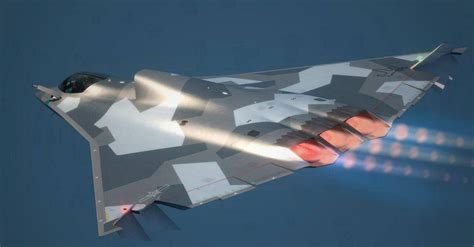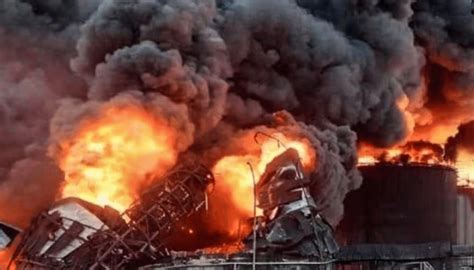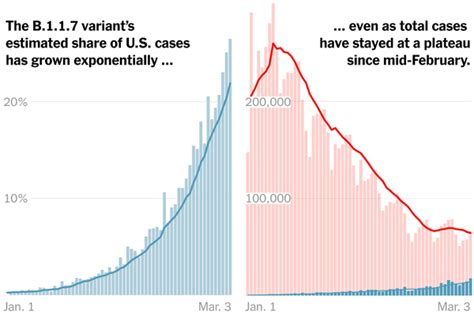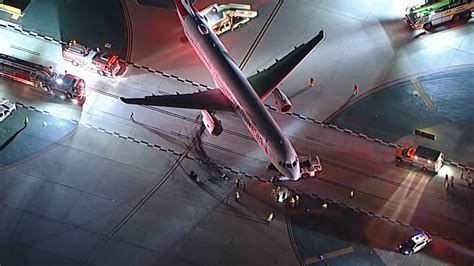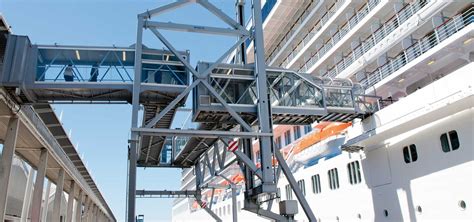
A cruise ship passenger fell into the water in Buenos Aires, Argentina, after the gangway unexpectedly detached from the pier on Tuesday, prompting a rescue operation and investigation into the incident.
A guest aboard the Holland America Line’s MS Zaandam cruise ship plunged into the frigid waters of the Argentine port after the gangway connecting the vessel to the pier suddenly separated. The incident occurred as passengers were disembarking, causing immediate concern for the individual’s safety. The ship had been docked in Buenos Aires as part of a South American cruise. According to Holland America Line, “While disembarking MS Zaandam in Buenos Aires, Argentina, on March 12, 2024, the gangway unexpectedly became detached from the pier.” The company confirmed in a statement that “a guest fell into the water.”
Emergency services responded swiftly, successfully rescuing the passenger from the water. The individual was immediately attended to by medical personnel. The current condition of the passenger remains unspecified in initial reports; however, Holland America Line stated that the person received medical attention.
The circumstances surrounding the gangway’s detachment are currently under investigation. Holland America Line has initiated a review of the incident to determine the cause and prevent future occurrences. The company is cooperating with local authorities in the investigation. The safety and security of passengers and crew are paramount, according to a Holland America Line spokesperson.
The incident has raised concerns about safety protocols for gangway operations and the potential risks associated with passenger disembarkation. Maritime authorities and cruise operators are likely to reassess procedures to ensure passenger safety during the docking process. This incident highlights the need for stringent maintenance and oversight of equipment used for passenger transfer between ship and shore.
Further updates will be provided as more information becomes available from the investigation.
Expanded Details and Context
The unexpected detachment of the gangway on the MS Zaandam is a serious event that underscores the inherent risks associated with cruise ship operations. While cruising is often perceived as a safe and relaxing vacation option, incidents such as this serve as a reminder of the potential for accidents and the importance of stringent safety measures.
Gangway Safety and Maintenance:
Gangways are critical components of cruise ship infrastructure, providing the primary means for passengers and crew to embark and disembark the vessel. These structures must be robust, well-maintained, and properly secured to prevent accidents. Regular inspections and maintenance are essential to identify and address any potential issues, such as corrosion, structural weaknesses, or faulty locking mechanisms.
Maritime regulations typically require cruise operators to adhere to strict safety standards for gangway operations. These standards cover various aspects, including the design, construction, installation, and maintenance of gangways. Compliance with these regulations is crucial for ensuring passenger safety and preventing accidents.
In addition to regulatory requirements, cruise operators often implement their own safety protocols for gangway operations. These protocols may include procedures for inspecting gangways before each use, monitoring weather conditions that could affect gangway stability, and providing adequate lighting and signage to guide passengers safely.
Emergency Response and Rescue Operations:
The swift response of emergency services in Buenos Aires was critical in ensuring the safe rescue of the passenger who fell into the water. The ability to quickly deploy rescue personnel and equipment is essential for minimizing the risks associated with maritime accidents.
Cruise ships typically have emergency response teams trained to handle various situations, including passenger falls, medical emergencies, and fires. These teams are equipped with specialized equipment, such as rescue boats, life vests, and medical supplies. Regular drills and training exercises are conducted to ensure that crew members are prepared to respond effectively in the event of an emergency.
In addition to the ship’s emergency response team, local authorities, such as coast guards and fire departments, often play a crucial role in maritime rescue operations. These agencies have the resources and expertise to conduct large-scale search and rescue operations, if necessary.
Investigation and Accountability:
The investigation into the gangway detachment on the MS Zaandam is essential for determining the cause of the incident and preventing similar occurrences in the future. The investigation will likely involve a thorough examination of the gangway’s design, construction, maintenance records, and operational procedures.
Investigators may also interview crew members, passengers, and shore-side personnel to gather information about the events leading up to the incident. The investigation’s findings will be used to identify any deficiencies in safety protocols or equipment and to recommend corrective actions.
In addition to the internal investigation conducted by Holland America Line, maritime authorities may also conduct their own investigation to determine whether any regulations or standards were violated. If violations are found, the cruise operator could face penalties, such as fines or suspensions.
Impact on Cruise Industry:
The incident on the MS Zaandam has the potential to impact the cruise industry in several ways. First, it could raise concerns among passengers about the safety of cruise travel. Cruise operators may need to take steps to reassure passengers that their safety is a top priority.
Second, the incident could lead to increased scrutiny of cruise ship safety practices by regulators and the public. Cruise operators may face pressure to enhance their safety protocols and invest in new technologies to prevent accidents.
Third, the incident could have financial implications for Holland America Line and the cruise industry as a whole. The company could face costs associated with the investigation, repairs, and potential lawsuits. The incident could also lead to a decline in bookings if passengers become concerned about safety.
Broader Safety Considerations in Cruise Travel:
While the gangway incident on the MS Zaandam is a specific event, it underscores the broader safety considerations associated with cruise travel. Cruise ships are complex vessels that operate in challenging environments, and a variety of factors can contribute to accidents.
Some of the common safety concerns on cruise ships include:
- Fire Safety: Cruise ships carry large quantities of flammable materials, and fires can spread rapidly in enclosed spaces. Fire prevention and suppression systems are essential for protecting passengers and crew.
- Medical Emergencies: Cruise ships can be far from shore, and access to medical care may be limited. Cruise ships must have adequate medical facilities and trained medical personnel to handle emergencies.
- Food Safety: Cruise ships serve thousands of meals each day, and foodborne illnesses can spread rapidly. Strict food safety protocols are necessary to prevent outbreaks.
- Security: Cruise ships are potential targets for terrorism and other criminal activity. Security measures, such as surveillance cameras and security personnel, are essential for protecting passengers and crew.
- Environmental Protection: Cruise ships can have a significant impact on the environment, and cruise operators must take steps to minimize pollution and protect marine ecosystems.
Passenger Responsibilities:
While cruise operators have a responsibility to ensure passenger safety, passengers also have a role to play. Passengers should be aware of the potential risks associated with cruise travel and take steps to protect themselves.
Some of the things passengers can do to stay safe on a cruise ship include:
- Pay Attention to Safety Briefings: Attend safety briefings and familiarize yourself with emergency procedures.
- Follow Instructions from Crew Members: Follow instructions from crew members in the event of an emergency.
- Be Aware of Your Surroundings: Be aware of your surroundings and avoid risky behaviors.
- Report Suspicious Activity: Report any suspicious activity to crew members.
- Wash Your Hands Frequently: Wash your hands frequently to prevent the spread of germs.
- Drink Responsibly: Drink responsibly and avoid excessive alcohol consumption.
- Protect Your Valuables: Protect your valuables from theft.
- Be Respectful of the Environment: Be respectful of the environment and avoid littering.
The incident involving the MS Zaandam serves as a reminder of the importance of safety in the cruise industry. Cruise operators, regulators, and passengers all have a role to play in ensuring that cruise travel is as safe as possible. Ongoing efforts to improve safety protocols, invest in new technologies, and raise awareness among passengers can help to prevent accidents and protect lives.
Holland America Line’s Response:
Holland America Line has emphasized its commitment to passenger safety and is fully cooperating with the investigation. The company’s statement underscores the seriousness with which they are treating the incident. “We are thinking of the guest and their family and are focused on providing them our full support,” the company stated. This demonstrates the immediate concern and care the company is providing to the affected passenger and their family during this challenging time. In addition to providing support to the passenger and their family, Holland America Line is also focusing on thoroughly investigating the incident to determine its root cause. This investigation will involve a detailed review of the gangway’s maintenance records, operational procedures, and any other relevant factors that may have contributed to the detachment. The goal of the investigation is to identify any deficiencies in the company’s safety protocols and to implement corrective actions to prevent similar incidents from occurring in the future.
The company is also likely to conduct a comprehensive review of its gangway safety procedures across its entire fleet of cruise ships. This review will involve assessing the condition of all gangways, ensuring that maintenance schedules are up-to-date, and providing additional training to crew members on proper gangway operation and safety protocols. By taking these proactive measures, Holland America Line hopes to reassure passengers that their safety is the company’s top priority.
The Role of Maritime Regulations:
The maritime industry is heavily regulated to ensure the safety of passengers, crew, and the environment. International conventions, such as the Safety of Life at Sea (SOLAS) Convention, establish minimum standards for the construction, equipment, and operation of ships. These regulations cover a wide range of safety aspects, including fire protection, life-saving appliances, navigation, and communication.
In addition to international conventions, many countries have their own national regulations governing maritime safety. These regulations may be more stringent than international standards and may address specific issues relevant to the country’s maritime environment.
Maritime regulations are enforced by various agencies, including coast guards, port authorities, and classification societies. These agencies conduct inspections, audits, and investigations to ensure that ships comply with safety standards. Ships that fail to comply with regulations may be subject to penalties, such as fines, detentions, or suspensions.
The incident on the MS Zaandam highlights the importance of effective maritime regulations and enforcement. Stringent regulations and robust enforcement mechanisms are essential for preventing accidents and protecting lives at sea.
The Future of Cruise Ship Safety:
The cruise industry is constantly evolving, and new technologies and safety measures are being developed to improve passenger safety. Some of the emerging trends in cruise ship safety include:
- Advanced Navigation Systems: Advanced navigation systems, such as electronic charts and automatic identification systems (AIS), can help to prevent collisions and groundings.
- Improved Fire Detection and Suppression Systems: Improved fire detection and suppression systems, such as infrared cameras and water mist systems, can help to detect and extinguish fires quickly.
- Enhanced Life-Saving Appliances: Enhanced life-saving appliances, such as improved lifeboats and life rafts, can increase the chances of survival in the event of an emergency.
- Remote Monitoring and Diagnostics: Remote monitoring and diagnostics systems can allow shore-based personnel to monitor shipboard equipment and identify potential problems before they lead to accidents.
- Data Analytics and Predictive Modeling: Data analytics and predictive modeling can be used to identify patterns and trends that could indicate potential safety risks.
By embracing these new technologies and safety measures, the cruise industry can continue to improve passenger safety and provide a safe and enjoyable vacation experience.
FAQ:
1. What happened on the Holland America Line’s MS Zaandam cruise ship?
On March 12, 2024, while the MS Zaandam was docked in Buenos Aires, Argentina, a gangway unexpectedly detached from the pier as passengers were disembarking. As a result, one passenger fell into the water.
2. What was the immediate response to the incident?
Emergency services responded quickly and rescued the passenger from the water. The passenger was then given medical attention. Holland America Line confirmed the incident and stated they are providing full support to the guest and their family.
3. What is Holland America Line doing in response to the gangway detachment?
Holland America Line has initiated an investigation to determine the cause of the gangway detachment. They are also cooperating with local authorities in the investigation. The company emphasizes that the safety and security of passengers and crew are paramount. They are also reviewing safety protocols and gangway operations across their fleet.
4. What is the condition of the passenger who fell into the water?
Initial reports did not specify the current condition of the passenger, but Holland America Line confirmed the passenger received medical attention. Further updates on the passenger’s condition have not been publicly released.
5. What are the potential implications of this incident for the cruise industry?
The incident could raise concerns among passengers about cruise safety, leading to increased scrutiny of safety practices by regulators and the public. This may prompt cruise operators to enhance safety protocols and invest in new technologies. Financially, Holland America Line and the cruise industry could face costs associated with the investigation, repairs, and potential lawsuits, potentially impacting future bookings.






